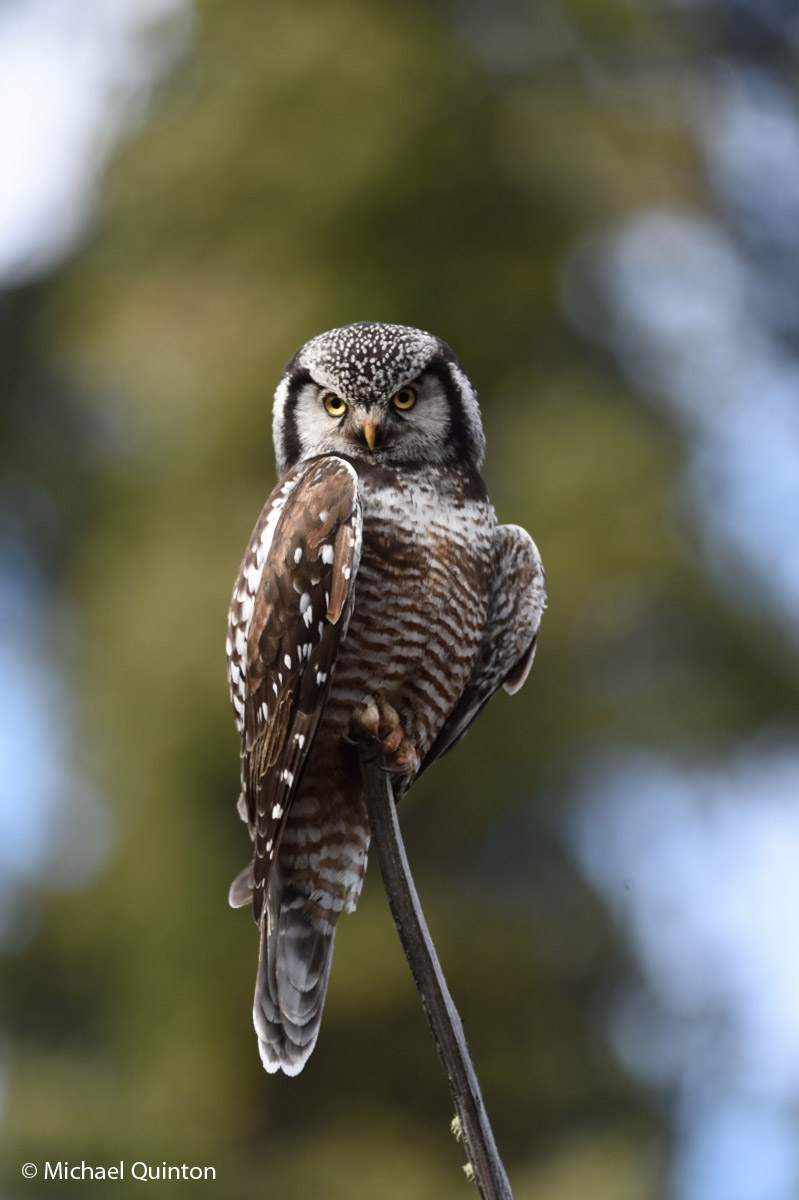A female northern flicker approaches the nesting cavity.
Life at the nest of northern flickers is at a frantic level. Most of the long, Alaskan summer days keeps the adults working at a breathless pace. The pair at this nest take turns guarding the nest from the resident red squirrel or trespassing northern flickers and taking forays out into the black spruce forest to hunt for their main food, wood ants and their larva. When the female arrives back at the nest cavity with food for the young, the male departs.
To listen to the audio clip, click on left side of the bar. Volume at right. Adult male northern flicker responds to his mate appearing near the nest. Then listen as female enters nesting cavity to feed chicks. Continue reading




 Our home in the wilderness.
Our home in the wilderness.





